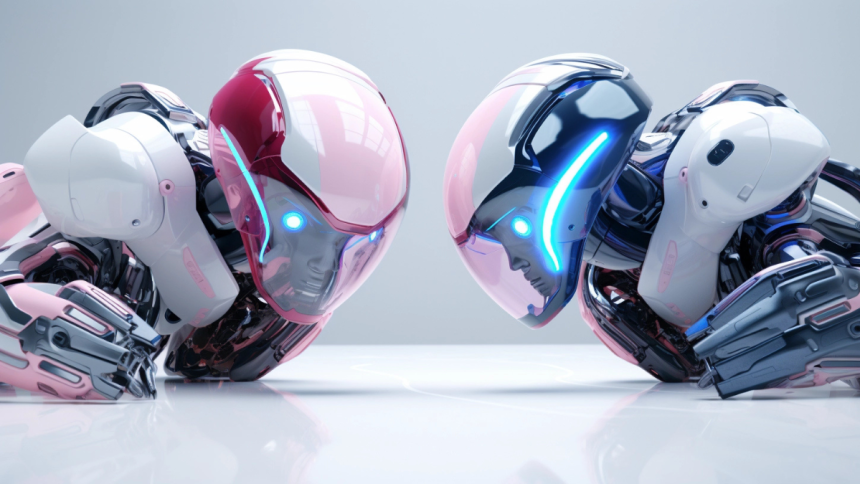Challenges in Image-to-3D Model Conversion
Converting images into 3D models presents a range of technical challenges. One significant issue lies in the complexity of accurately capturing depth and perspective from a flat image. Traditional techniques often struggle with varying lighting conditions, shadows, and intricate textures, which can lead to distorted or incomplete models. The diversity of objects and scenes further complicates the process, as each may require unique approaches to achieve satisfactory results. According to research, there are numerous [challenges in converting 2D photos to 3D models](https://www.zreality.com/converting-photos-to-3d-data-with-ai-a-critical-look-at-the-state-of-the-art-benefits-and-advantages/?lang=en), particularly with complex objects that have fine details.
Another challenge is the computational power required for efficient processing. High-quality image-to-3D conversions demand substantial resources, which can limit accessibility for smaller developers or creators. The need for sophisticated algorithms and real-time rendering capabilities adds to this burden. Additionally, ensuring that the resulting models are optimized for different applications—such as animation or virtual reality—introduces further layers of complexity. Tools like Hyper3D image to 3d model are working to address these challenges by streamlining the conversion process.
Common Issues and Their Solutions
Image-to-3D model conversion often presents several challenges that can hinder the quality of AI-generated videos. One common issue is the inability of the AI to accurately interpret depth and dimension from a 2D image. This can result in models that are flat or lack realism. To address this, ensure the input images are of high quality and well-lit, as these factors significantly influence the AI’s ability to generate accurate models. Utilizing advanced algorithms that focus on depth estimation may enhance the conversion process, allowing for more lifelike representations. The problem of [converting 2D images to their original 3D scene](https://snlcreative.com/2023/01/27/ai-generated-3d-models-from-images-and-text-descriptions/) is known as inverse graphics, which remains challenging due to the complex relationship between dimensions.
Another frequent problem is the time-consuming nature of rendering 3D models, particularly when processing complex images. This can be frustrating for creators who aim for efficiency in their workflows. Implementing more efficient rendering engines can help streamline this process. Additionally, breaking down complex scenes into simpler components may aid in faster processing. Investing in better hardware can also alleviate some delays, as faster processing power can significantly decrease rendering times and improve overall workflow. Services like Wan Make Videos with AI help address these issues by providing specialized tools designed for video creation from models.
Future Trends in AI Video Technology
The landscape of AI video technology is evolving rapidly, with advancements in machine learning and computer vision driving new possibilities. One prominent trend is the rise of personalized AI-generated content, which allows creators to tailor videos for specific demographics or user preferences. This shift towards customization can significantly enhance viewer engagement and improve the overall effectiveness of video messaging across various platforms.
Another emerging trend is the integration of real-time rendering capabilities into video production workflows. This innovation enables creators to generate high-fidelity videos on the fly, thereby reducing reliance on extensive post-production processes. As hardware continues to become more powerful and accessible, the potential for real-time video generation will likely lead to more dynamic and interactive viewing experiences, reshaping how audiences consume media. Platforms like Make Videos with AI are at the forefront of this trend, offering tools that can generate videos in just seconds while maintaining high quality.
What to Expect in the Coming Years
The landscape of AI video generation is poised for significant transformation as technology continues to evolve. Enhanced algorithms and increased processing power will allow for more sophisticated image-to-3D model conversions. This advancement will lead to higher fidelity in generated videos, where textures and lighting mimic real-world conditions more accurately. Users can anticipate smoother animations and more realistic character interactions, making AI-generated content increasingly indistinguishable from traditional methods.
Moreover, integrations with virtual and augmented reality will offer new dimensions to video experiences. Creators will have the ability to engage audiences in fully immersive environments. As collaborations between AI developers and content creators grow, tools will become more accessible, empowering individuals and businesses alike to harness these capabilities without requiring extensive technical expertise. The future holds exciting possibilities for the democratization of video production, enabling an array of voices to share their unique stories. Tools like Hyper3D image to 3d model are already addressing [barriers in 3D model creation](https://medium.com/data-science-collective/depthanything-v2-tutorial-how-to-convert-2d-images-to-3d-models-with-python-2708d295b7e5), which previously required expensive hardware setups or painstaking manual modeling.
Comparing Traditional Video Production to AI Methods
Traditional video production relies heavily on human creativity and extensive planning. This method involves a team of professionals including directors, cinematographers, and editors, all collaborating to bring a concept to life. Each phase, from scripting to filming to post-production, requires time, resources, and meticulous attention to detail. The process can be time-consuming, often taking weeks or months to complete a single project.
In contrast, AI methods dramatically streamline video creation. By leveraging algorithms, these technologies can generate visuals from simple inputs, significantly reducing the time needed for production. The automation of tasks such as animation, editing, and even voice-over generation allows for rapid output. However, while AI can enhance productivity and lower costs, it may lack the nuanced creativity and emotional depth that skilled human directors impart to their work. This balance between efficiency and artistry will continue to shape the landscape of video production. Services like Make Videos with AI highlight this efficiency by allowing users to generate videos in just 10 seconds—dramatically faster than traditional methods.
Pros and Cons of Each Approach
Traditional video production often benefits from high levels of craftsmanship and nuanced storytelling. Skilled professionals can manipulate lighting, camera angles, and sound design to create impactful narratives. The use of physical sets allows for an authentic look and feel that can resonate deeply with audiences. However, this method typically involves significant time and financial investment, making it less accessible for smaller projects or companies with limited budgets.
Conversely, AI-generated videos offer a streamlined approach that can significantly reduce production time and costs. The ability to quickly generate models and scenes enables rapid iteration and experimentation. This technology allows for creative possibilities that may not be feasible with traditional methods, such as real-time modifications and enhanced visual effects. Despite these advantages, AI-generated content may still struggle with intricate emotional storytelling and may sometimes lack the human touch necessary for impactful engagement. Tools like Wan Make Videos with AI aim to bridge this gap by providing easy-to-use interfaces for video editing and effects that enhance AI-generated content.
Tips for Optimizing Your AI-Generated Videos
Emphasizing clarity and coherence is essential for the success of AI-generated videos. Prioritize high-resolution images and clear audio to enhance the viewer’s experience. Editing tools can help refine the final product, so take advantage of software that offers features like transitions and color correction. Additionally, optimizing the pacing of the video can keep the audience engaged. A well-organized flow will ensure that key points are highlighted effectively.
Engaging visuals can capture and retain viewer attention. Incorporating dynamic elements such as animations or text overlays can provide additional context. It is also important to tailor video length to the intended platform, as different audiences have varying preferences for duration. Testing different formats and styles can lead to valuable insights about what resonates with viewers, contributing to continual improvement in video production. Using services like Make Videos with AI can help maintain consistency throughout your videos by allowing you to save characters, props, and scenes for easy reuse.
Best Practices for Quality Output
To achieve high-quality AI-generated videos, it is essential to begin with clear and high-resolution images. The quality of the input images greatly influences the final output. Using images with sufficient detail and proper lighting not only enhances the texture and realism of the 3D model but also improves the overall visual appeal. Consistency in image style will help the AI maintain a coherent look across different frames, contributing to a smoother and more polished finished product.
In addition to selecting quality images, fine-tuning the parameters within the AI tool can significantly impact output. Understanding the capabilities and limitations of the software can help users make informed adjustments for optimal results. Frequent testing and iteration allow for improvements, enabling users to refine their approach based on initial outputs. Engaging with the AI community through forums and tutorials can also provide valuable insights and tips, enhancing the learning process and ensuring that creators stay updated with the latest advancements in the technology. Tools like Hyper3D image to 3d model can help address [common problems in 3D asset creation](https://www.sloyd.ai/blog/3d-asset-creation-common-problems-and-ai-solutions), such as high skill barriers for beginners and long production times.
FAQS
What is image-to-3D model technology?
Image-to-3D model technology refers to the process of converting 2D images into three-dimensional models using advanced algorithms and AI techniques. This technology enables the creation of 3D representations that can be used in various applications, including video production.
What are some common challenges in image-to-3D model conversion?
Common challenges include dealing with low-quality images, inconsistencies in lighting and texture, and the complexity of accurately representing depth and dimensions. These issues can lead to subpar 3D models that may not meet user expectations.
How can I optimize my AI-generated videos for better quality?
To optimize your AI-generated videos, ensure you use high-quality images for conversion, apply proper lighting techniques, and utilize advanced rendering software. Additionally, following best practices such as consistent framing and focusing on details can enhance the output quality.
What are the pros and cons of traditional video production compared to AI methods?
The pros of traditional video production include a high level of creative control and the ability to capture nuances that AI might miss. However, it can be time-consuming and costly. On the other hand, AI methods can streamline the production process and reduce costs but may lack the same level of artistic finesse.
What future trends can we expect in AI video technology?
In the coming years, we can expect advancements such as improved algorithms for faster and more accurate 3D model generation, enhanced integration of AI with virtual and augmented reality, and the potential for more personalized video content tailored to individual viewers’ preferences.
Lynn Martelli is an editor at Readability. She received her MFA in Creative Writing from Antioch University and has worked as an editor for over 10 years. Lynn has edited a wide variety of books, including fiction, non-fiction, memoirs, and more. In her free time, Lynn enjoys reading, writing, and spending time with her family and friends.















